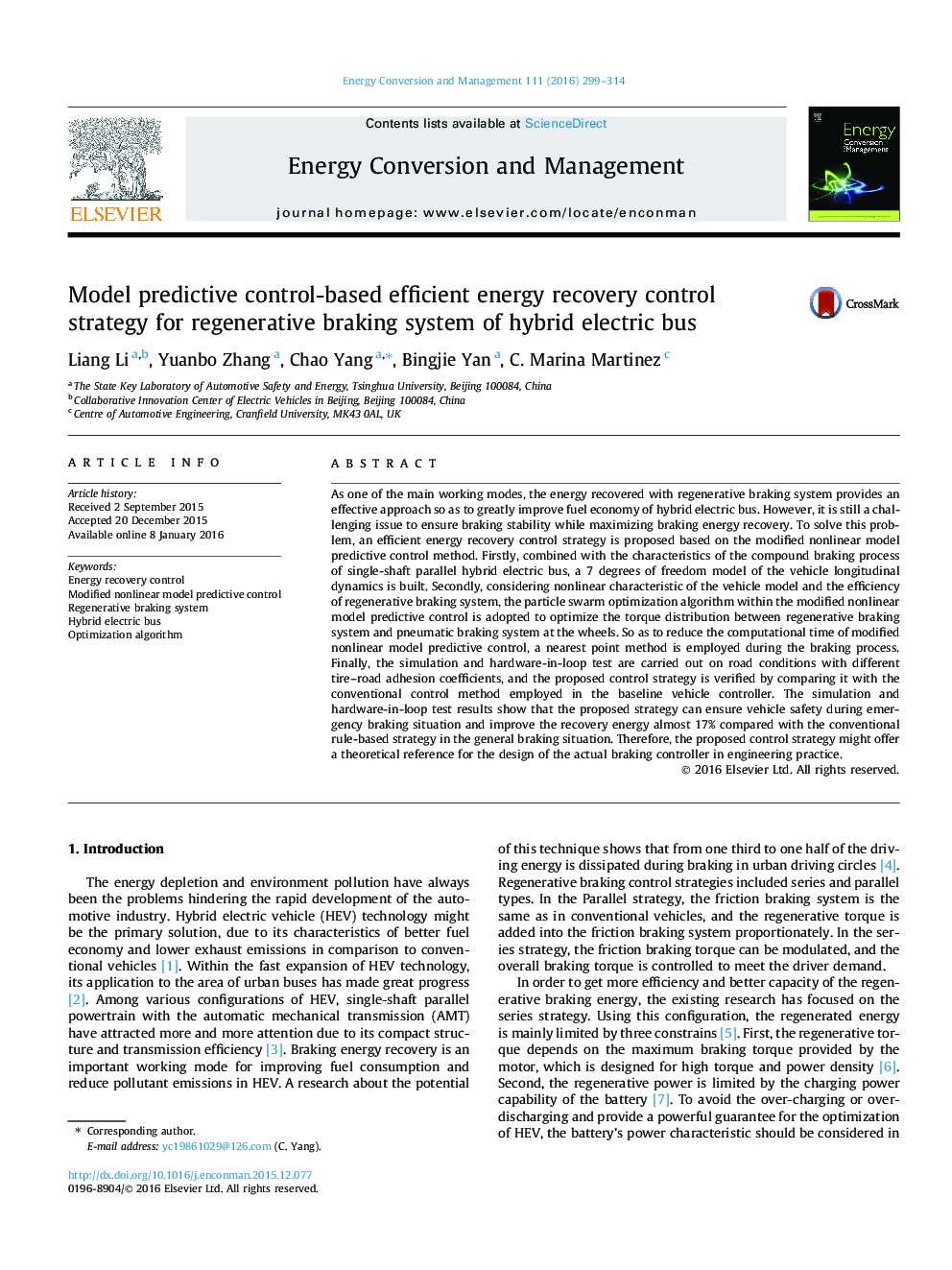| کد مقاله | کد نشریه | سال انتشار | مقاله انگلیسی | نسخه تمام متن |
|---|---|---|---|---|
| 771528 | 1462851 | 2016 | 16 صفحه PDF | دانلود رایگان |
• A 7-degree-of-freedom model of hybrid electric vehicle with regenerative braking system is built.
• A modified nonlinear model predictive control strategy is developed.
• The particle swarm optimization algorithm is employed to solve the optimization problem.
• The proposed control strategy is verified by simulation and hardware-in-loop tests.
• Test results verify the effectiveness of the proposed control strategy.
As one of the main working modes, the energy recovered with regenerative braking system provides an effective approach so as to greatly improve fuel economy of hybrid electric bus. However, it is still a challenging issue to ensure braking stability while maximizing braking energy recovery. To solve this problem, an efficient energy recovery control strategy is proposed based on the modified nonlinear model predictive control method. Firstly, combined with the characteristics of the compound braking process of single-shaft parallel hybrid electric bus, a 7 degrees of freedom model of the vehicle longitudinal dynamics is built. Secondly, considering nonlinear characteristic of the vehicle model and the efficiency of regenerative braking system, the particle swarm optimization algorithm within the modified nonlinear model predictive control is adopted to optimize the torque distribution between regenerative braking system and pneumatic braking system at the wheels. So as to reduce the computational time of modified nonlinear model predictive control, a nearest point method is employed during the braking process. Finally, the simulation and hardware-in-loop test are carried out on road conditions with different tire–road adhesion coefficients, and the proposed control strategy is verified by comparing it with the conventional control method employed in the baseline vehicle controller. The simulation and hardware-in-loop test results show that the proposed strategy can ensure vehicle safety during emergency braking situation and improve the recovery energy almost 17% compared with the conventional rule-based strategy in the general braking situation. Therefore, the proposed control strategy might offer a theoretical reference for the design of the actual braking controller in engineering practice.
Journal: Energy Conversion and Management - Volume 111, 1 March 2016, Pages 299–314
